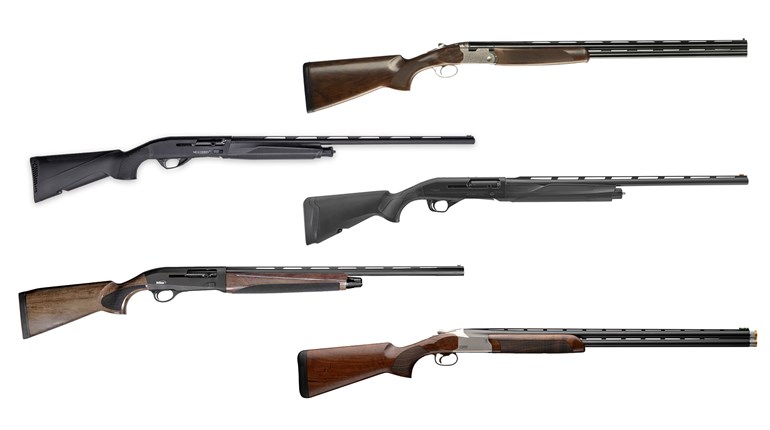Firearm: Langdon Tactical Beretta 92 (MSRP: $1,253); Langdon Tactical RDO slide (MSRP: $599 for gray)
Beretta’s 92 has been a staple for close to 50 years now. Designed in 1975, production started in 1976 and it was adopted as the M9 for U.S. Military service in 1985. It’s a star of TV and movies, most notably the Lethal Weapon and Die Hard franchises. It’s a staple, like a Honda Civic. As a traditional, all-metal double/single action semi-automatic, it’s on a par with the SIG P226, CZ-75 and others. However, pair the 92 with the magic of Langdon Tactical, and that changes everything. To continue the automotive analogy, that dependable, boring Civic is now a turbocharged Type R variant with fender flares and wide tires.
Here are just some of the improvements and upgrades that come with an LTT 92: Radiused trigger guard, skeletonized hammer, thin VZ /LTT G10 grips, beveled magazine well and an oversize magazine release. The trigger gets Landgon’s signature trigger job, bringing it to a 6 ½ to 7-pound double-action pull with a 3 ½ to 4-pound single-action pull. Langdon optimizes all firing-group components to result in a significant difference from the standard Beretta trigger.
This particular LTT 92 has had Langdon’s 92 Elite LTT Red Dot Ready Slide added to it to allow for a red-dot sight to be mounted. There are two options for accomplishing this with Langdon Tactical: You can send your existing slide to Langdon to have them rework it for the RDO plate, or you can opt for the complete slide, obviously at a higher price. That upgrade, though, in addition to providing a second slide, allows for a greater array of red-dot plate options.
Fans of the Beretta 92 have never had it so good! In addition to a top-tier option for the standard 92 in the LTT Elite, there’s now an option to add red-dot capability to your existing pistol as well. If you’re an early adopter and already own an LTT 92, you can opt for the complete slide minus barrel and recoil spring or you can send your existing slide in for the RMR cut. Langdon upgrades with co-witnessing sights and the screws needed to attach your optic (optic sold separately, of course). The bottom line is a red-dot equipped Beretta 92 operating at peak efficiency with Landgon Tactical upgrades—there’s a lot to like about that.
Holster: Tier1 Concealed MSP Pro (MSRP: $159.99)
The Beretta 92 has a few holsters available for it, no question about that. The LTT 92, with the accessory rail, does narrow the selection down somewhat. Adding a red-dot-capable slide and taller sights makes holster selection even more limited, which is why it makes a lot of sense to have a multi-fit option like the PHLster Floodlight or the holster we’ve chosen for today’s kit, the Tier1 Concealed MSP Pro.
Designed in conjunction with Scott Jedlinkski and Modern Samurai Project, the MSP Pro indexes on an attached weaponlight. Models exist for the ModLite PL350, Streamlight TLR-1 and the SureFire X300 we have here. On the frame side, two screws bolt the pieces together along with a wing if desired. On the slide side, shock cords hold the two pieces together for an adjustable fit depending on optic, sights, and other variables. Holsters are available for right- and left-handed shooters, come with tuckable belt clips and a variety of color options.
Optic: Trijicon RMR Type 2 Adjustable LED (MSRP: $720)
We’ve opted for the origin-of-species pistol-mounted red-dot sight, the Trijicon RMR. Rugged, reliable and darn near indestructible, the RMR has been a SOCOM staple since 2018. The same features that made the RMR perfect for U.S. Special Operations make it ideal for use on an everyday-carry firearm. The RMR we have here is the Type 2, which Trijicon released with upgraded electronic components to address the complexities of a powered optic on a pistol slide.
Available with 1-, 3.25- and 6-MOA dot sizes, the RMR Type 2 Adjustable LED has large, easy-to-access buttons on either side of the unit to increase or decrease brightness. Eight brightness settings including two compatible with night vision are available, and the unit can be toggled between manual brightness adjustment and automatic. The RMR’s housing is specifically designed to guard against damage if dropped (and many have tested it, both on purpose and, well, not). There’s a reason the “RMR Footprint” has become somewhat of a standard, and it’s why we’ve opted for an RMR for this kit.

























